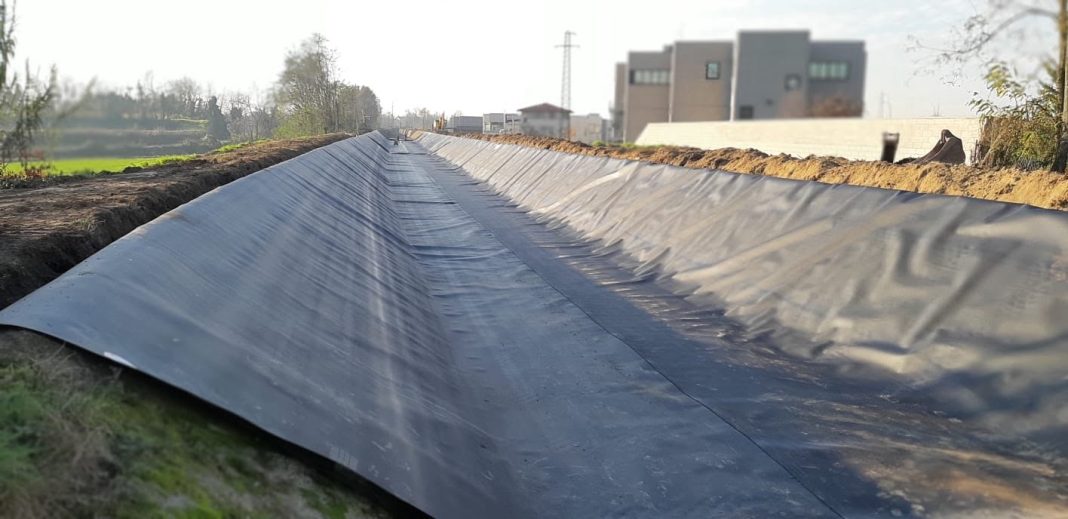Geomembranes have emerged as a cornerstone in environmental protection and resource management, serving as crucial barriers in various applications.
From landfill liners to water reservoirs, these synthetic membranes play a pivotal role in ensuring the containment of liquids and gases while preventing environmental contamination. In this article, we will delve into the versatility of geomembranes, examining their properties, applications, and the benefits they bring to various industries.
What Are Geomembranes?
Geomembranes are impermeable membranes made from synthetic materials such as polyethylene, polypropylene, or PVC. These materials are engineered to provide a barrier against the migration of fluids or gases, making them ideal for a wide range of applications.
The thickness, flexibility, and chemical resistance of geomembranes can vary, allowing for customization based on specific project needs.
Key Properties of Geomembranes
- Impermeability: One of the primary functions of geomembranes is to provide a waterproof barrier. This impermeability is essential for preventing leachate from landfills from contaminating groundwater and for keeping water in reservoirs.
- Durability: Geomembranes are designed to withstand harsh environmental conditions, including UV radiation, temperature fluctuations, and chemical exposure. This durability ensures long-term performance and reduces the need for frequent replacements.
- Flexibility: The flexibility of geomembranes allows them to conform to various substrate shapes and uneven surfaces, making them suitable for diverse applications.
- Cost-Effectiveness: Geomembranes offer a cost-effective solution for environmental protection compared to traditional materials, requiring less labor and maintenance over time.
Applications of Geomembranes
1. Landfill Liners
Landfills pose significant environmental risks, particularly in terms of leachate production, which can contaminate soil and groundwater. Geomembranes serve as liners in landfill construction, providing an impermeable barrier that prevents leachate from escaping into the environment.
These liners are typically installed in combination with other geosynthetic materials to enhance their effectiveness and stability.
2. Water Reservoirs
In water reservoir applications, geomembranes are used to line ponds and tanks, providing a reliable barrier to prevent water loss through seepage. This is especially critical in arid regions where water conservation is paramount.
The use of geomembranes ensures that stored water remains clean and free from contamination, maintaining its quality for agricultural or drinking purposes.
3. Mining Operations
Mining operations generate significant amounts of waste and can pose environmental hazards. Geomembranes are utilized in heap leaching processes to contain chemicals and prevent them from infiltrating the soil. Additionally, they are employed in tailings storage facilities to manage and contain waste materials safely.
4. Aquaculture
In aquaculture, geomembranes are used to create lined ponds for fish farming. This application helps control water quality, prevents the escape of fish, and protects against contamination from external sources. The impermeability of geomembranes also reduces water loss, ensuring efficient resource management.
5. Irrigation Systems
Geomembranes can be integrated into irrigation systems to create lined ditches or canals that minimize water loss due to seepage. This application is particularly valuable in regions with limited water resources, allowing for more efficient irrigation practices.
6. Environmental Remediation
Geomembranes play a crucial role in environmental remediation projects, where they are used to contain contaminated sites and prevent further spread of pollutants. They are often used in conjunction with other technologies to facilitate the safe management of hazardous materials.
Benefits of Using Geomembranes
1. Environmental Protection
The primary advantage of geomembranes is their ability to protect the environment. By preventing contamination of soil and groundwater, geomembranes contribute to sustainable resource management and ecosystem preservation.
2. Enhanced Resource Efficiency
In applications such as water reservoirs and irrigation systems, geomembranes help conserve valuable resources by minimizing water loss. This efficiency is critical in regions facing water scarcity.
3. Cost Savings
The installation of geomembranes can lead to significant cost savings over the long term. Their durability reduces maintenance needs, while their effectiveness in preventing leaks and contamination minimizes potential liabilities.
4. Flexibility in Design
The versatility of geomembranes allows for their use in a wide range of projects, from large-scale landfills to small aquaculture ponds. This adaptability makes them a preferred choice for engineers and contractors in various industries.
Conclusion
Geomembranes are a vital component in modern environmental management, offering versatile solutions for applications ranging from landfill liners to water reservoirs.
Their unique properties, such as impermeability, durability, and flexibility, make them indispensable in protecting our natural resources and ensuring sustainable practices.
As industries continue to face challenges related to waste management and water conservation, the role of geomembranes will only become more significant, paving the way for a cleaner and more sustainable future.
Also Read
Why progressive cavity pumps are essential for wastewater and sludge management
How drones are revolutionizing aerial surveying in construction

